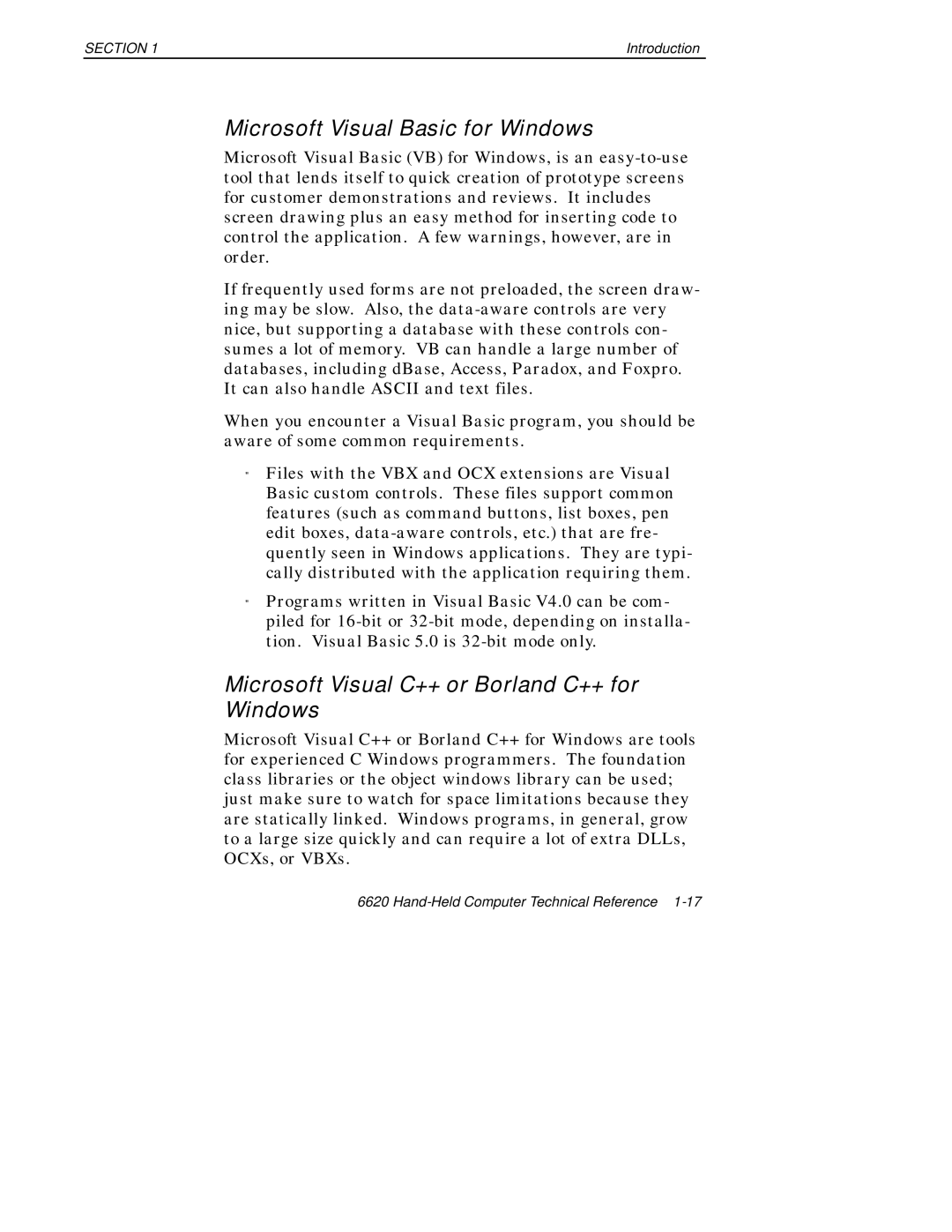SECTION 1 | Introduction |
Microsoft Visual Basic for Windows
Microsoft Visual Basic (VB) for Windows, is an
If frequently used forms are not preloaded, the screen draw- ing may be slow. Also, the
When you encounter a Visual Basic program, you should be aware of some common requirements.
"Files with the VBX and OCX extensions are Visual Basic custom controls. These files support common features (such as command buttons, list boxes, pen edit boxes,
"Programs written in Visual Basic V4.0 can be com- piled for
Microsoft Visual C++ or Borland C++ for
Windows
Microsoft Visual C++ or Borland C++ for Windows are tools for experienced C Windows programmers. The foundation class libraries or the object windows library can be used; just make sure to watch for space limitations because they are statically linked. Windows programs, in general, grow to a large size quickly and can require a lot of extra DLLs, OCXs, or VBXs.
6620
